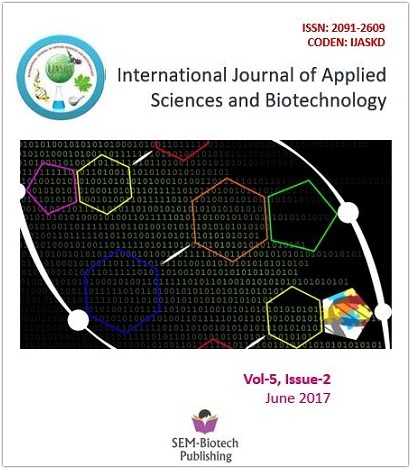Study of Antioxidant, Anti-inflammatory, and DNA-Damage Protection Properties of Some Indian Medicinal Plants Reveal their Possible Role in Combating Psoriasis
DOI:
https://doi.org/10.3126/ijasbt.v5i2.17618Keywords:
Reactive oxygen species, Psoriasis, Antioxidants, Anti-inflammatory, Oxidative DNA damageAbstract
Reactive oxygen species (ROS) are generated due to severe oxidative stress, thereby resulting in pathogenesis of various disorders in humans, including psoriasis. DNA damage is the major manifestation of long term ROS exposure. ROS can be scavenged by natural antioxidant compounds present in medicinal plants. In this study, aqueous, methanolic and chloroform extracts of eleven dermatologically significant Indian medicinal plants were evaluated for their ROS scavenging and antioxidant properties, using 2,2-diphenyl-1-picrylhydrazyl (DPPH) radical scavenging assay, Trolox equivalent antioxidant capacity (TEAC), Ferric reducing antioxidant power assay (FRAP), along with total phenolic content determination. Lipoxygenase inhibition assay was conducted to determine anti-inflammatory activities. DNA-damage protective capacities were also assessed using plasmid pBluescript II SK(–) DNA, where DNA damage was induced by Fenton reaction. The study reveals that the extracts of T. cordifolia, C. paniculatus, C. longa and A. vera performed far much better, in almost all the assays, with regards to P. corylifolia, a medicinal plant traditionally used to treat psoriasis, thus indicating these plants to be potent sources of effective drug formulation for treatment of psoriasis.
Int. J. Appl. Sci. Biotechnol. Vol 5(2): 141-149




